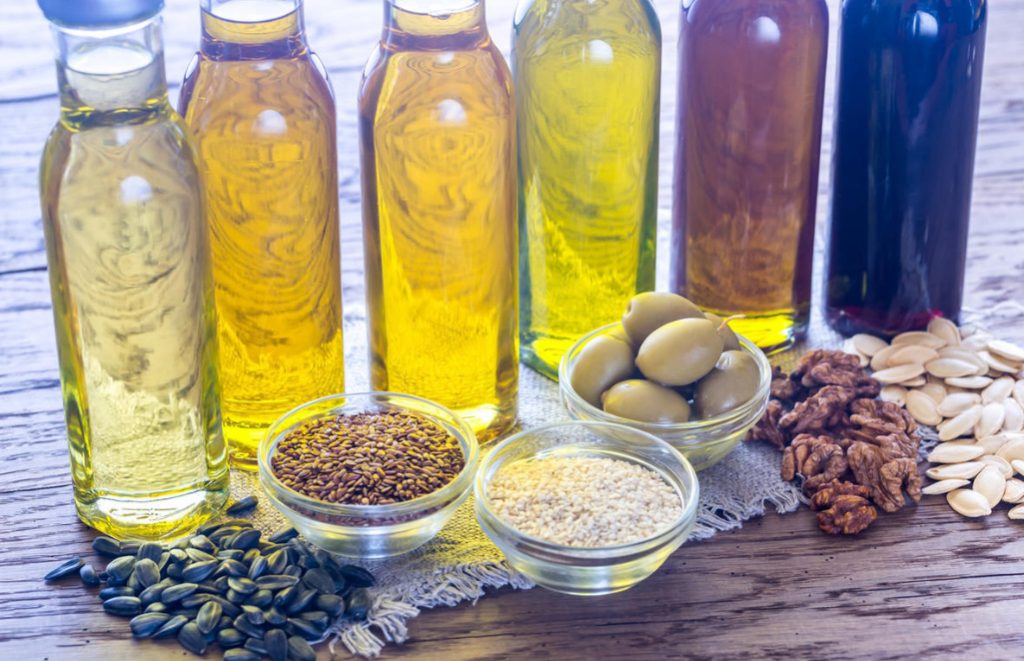Fat, beef, pork fat
The content of fatty acids in these oils can vary depending on the diet of the animal. For example, if an animal feeds primarily on grass or green foods, its fat has more saturated fatty acids and monounsaturated fatty acids, and polyunsaturated fatty acids contain more omega-3 fats. If animals are fed grain, then, as a rule, in their fat more fatty acids omega 6 (polyunsaturated fatty acids).
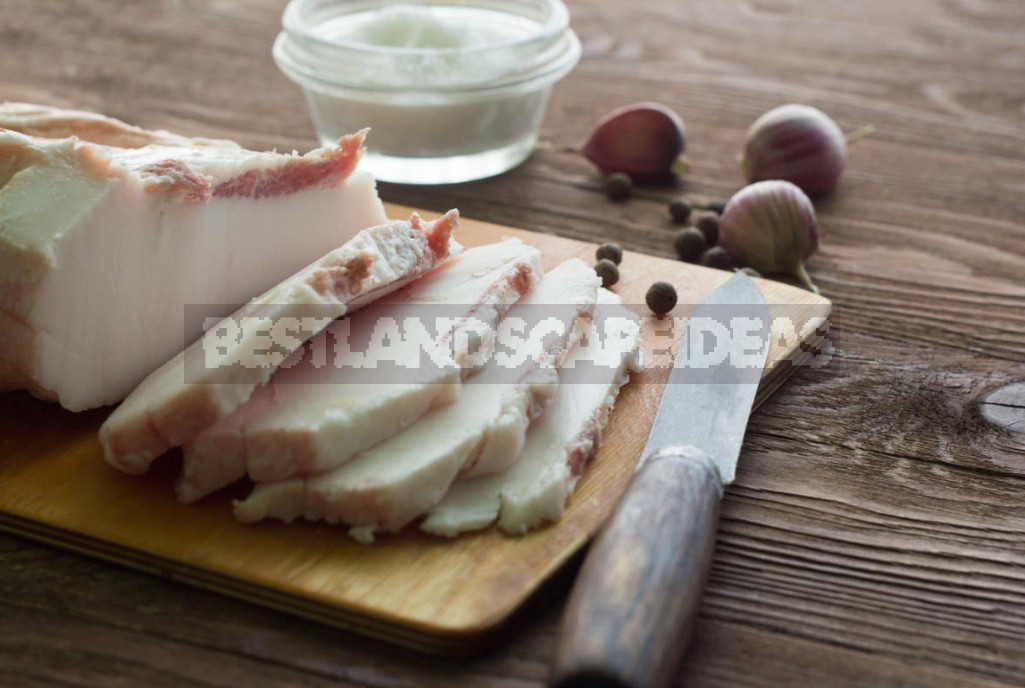
With this in mind, a healthier choice is to buy the fat of animals kept in natural conditions-on pasture rather than stall content. Their fat is great for high-temperature cooking and frying.
As with butter, current research does not support what we have been told over the past few decades about animal fat contributing to heart disease, weight gain and other health problems.
Sunflower oil
Sunflower oil has a very high content of polyunsaturated fatty acids. Although the plant Helianthus appeared in America, however, Americans (and Europeans) almost do not eat sunflower oil, calling it the “worst choice” for nutrition.

The profile of sunflower oil:
- saturated fatty acids-12%;
- monounsaturated fatty acids-16%;
- polyunsaturated fatty acids-72% (including omega-3 fats-1%, and omega-6-71%).
Rapeseed oil (canola oil)
In the West – it is widely distributed and widely advertised as a healthy oil, but recently it is controversial among nutritionists.

The production name of rapeseed oil is “canola oil”. If the labels printed its real name, Canadian Oil, Low Acid, probably no one would buy it. And this would be correct, since rapeseed oil, along with sunflower and corn, is the worst choice for human consumption.
Here is a small history of rapeseed oil production. During World war II, rapeseed oil was used on naval ships as a lubricant. When the war ended, there were so many rapeseed farms in Canada that farmers began to look for other uses for it. In the late 1970s, the food industry found a way to make rapeseed suitable for human consumption. Rapeseed oil in its original form-very contaminated and strongly smelling-began to be cleaned, bleached and deodorized using aggressive chemicals to make it acceptable. The end result of these processes is what is now called ” canola oil.”
Canola oil is also prone to rancidity due to the refining process and often goes rancid before it even reaches store shelves.
Rapeseed oil is mainly used in cooking, frying and in industrial food products as it is very cheap. But because it contains significant amounts of polyunsaturated fatty acids in addition to frequent rancidity, this enhances its inflammatory effects on human health. Nutritionists advise to avoid it completely.
Profile of canola oil:
- saturated fatty acids-7%;
- monounsaturated fatty acids-61%;
- polyunsaturated fatty acids-32% (including omega-3 fats-11%, and omega-6-21%).
Soybean oil
Soybean oil contains 54% omega-6 fatty acids. Again, this means its strong Pro-inflammatory action, so it should be avoided completely. Unfortunately, since this product is very cheap, it is one of the most common oils in prepared foods. Browse ingredient labels on finished products when you’re at the grocery store and you’ll find soy oil as part of a variety of products: salad dressings, mayonnaise, pastries… read labels Carefully and avoid using any products that contain soy oil.
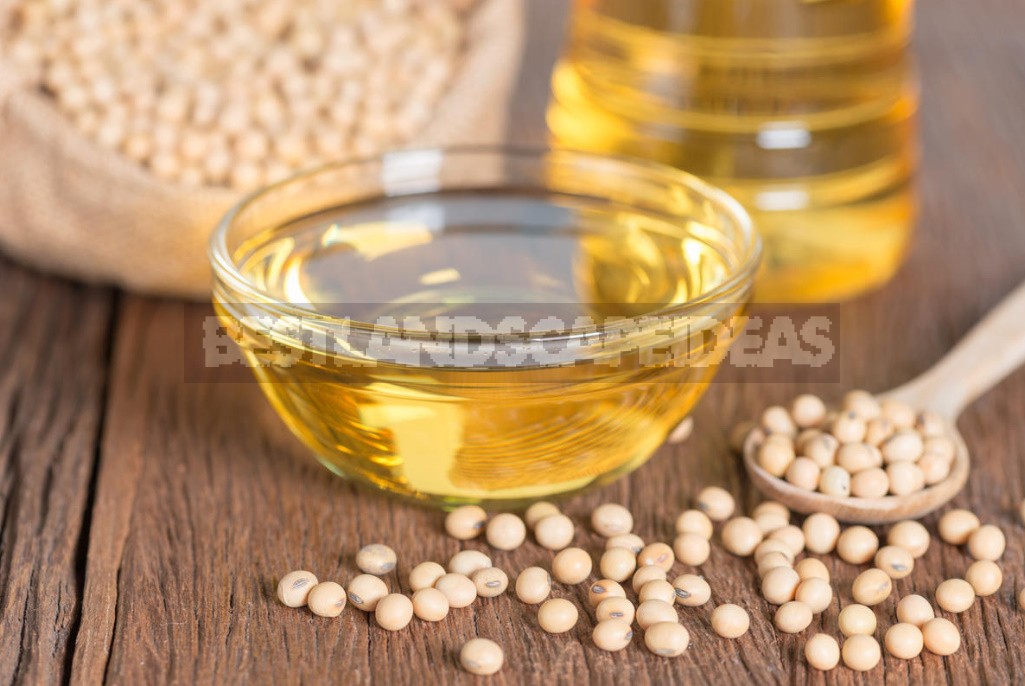
A profile of soybean oil:
- saturated fatty acids-15%;
- monounsaturated fatty acids-23%;
- polyunsaturated fatty acids-62% (including omega-3 fats – 8%, and omega-6 – 54%).
Corn oil
Corn oil has recently appeared frequently on the shelves of our stores. It is more expensive than sunflower, and for this reason is presented as healthier.
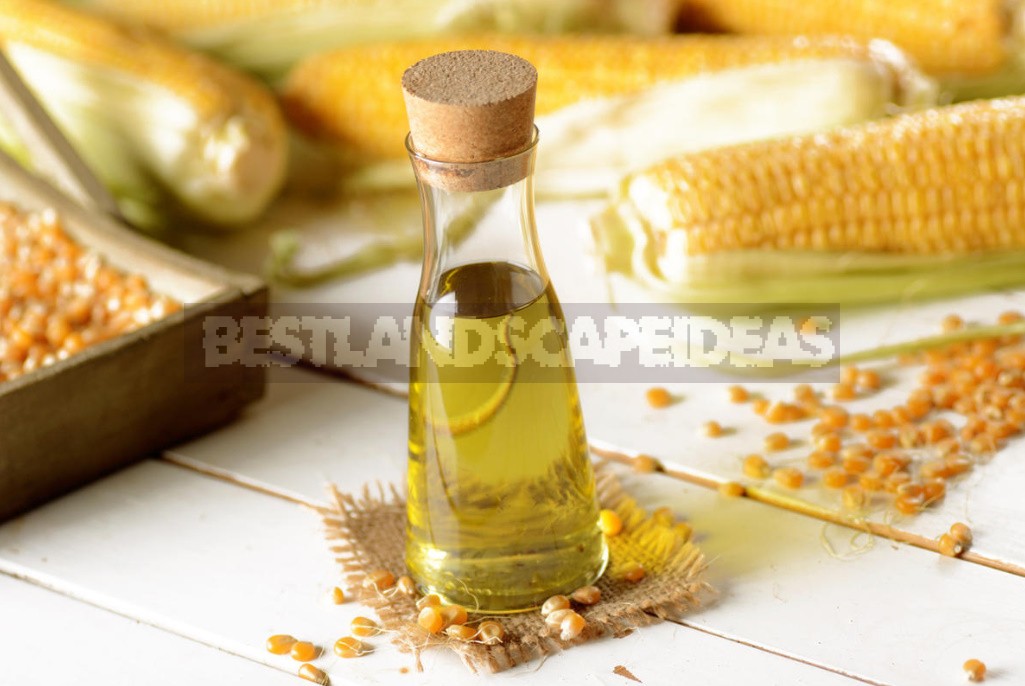
In fact, corn oil is 57% omega-6 fatty acids, which means, as you know, has a Pro-inflammatory effect on our body, and therefore unsuitable for cooking. Again, because corn oil is cheap, it is used in many foods.
A profile of corn oil:
- saturated fatty acids-13%;
- monounsaturated fatty acids-29%;
- polyunsaturated fatty acids-58% (including omega-3 fats-1%, and omega-6-57%).
About storage and use
If you ask me where I got all this, I will answer: Yes, from all kinds of literature. Now there is so much information that it is simply impossible to pass by it.
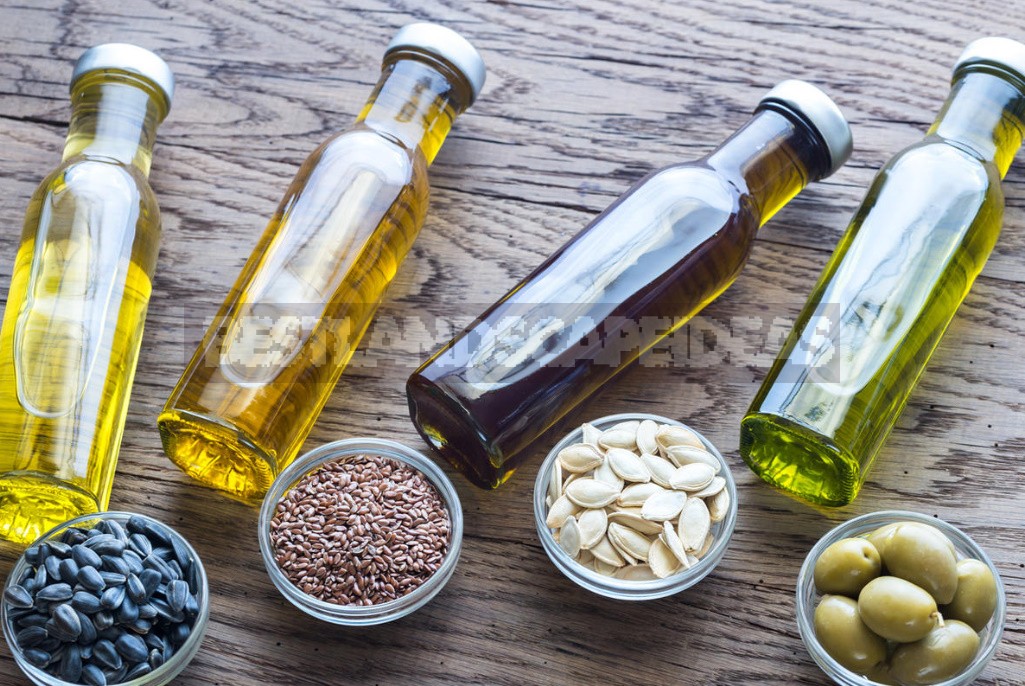
But, most likely, the question is not what oil to choose – olive, corn or sunflower. The question is how the oil is produced, how to store it and how often to use it. Therefore, you can buy sunflower, but:
- it must be cold pressed oil;
- keep it in the dark;
- do not heat above 100°C (that is, do not fry on it);
- use in raw form, but not often, so as not to be oversaturated with omega-6 fatty acids (remember, omega-6 polyunsaturated fatty acids support inflammation in our body).
What is the result?
Well, if you read the figures carefully, you can see that the grain oils we have become accustomed to in recent years are really the “worst choice” for everyday use and for frying.

So what’s the bottom line? I will not risk giving specific recommendations on the choice of oils. Here everyone decides what is best for him. But for myself, I made the following conclusion: it’s time to return to the time-tested methods of using fat in the kitchen, which were adhered to by many generations of our ancestors: lard, and if you need more dietary food-butter (including melted butter). Fish can be fry and on vegetable, because fish is fried easily and quickly under more-less low temperatures. And also add raw vegetable oil to salads.
From vegetable oils choose the most healthy-olive cold pressed, sesame (for salads and marinades), flax. And completely avoid grain oils: sunflower, rapeseed, corn, soy. And also:
- Store vegetable oils for a short time, and therefore buy a little.
- Get rid of the habit of keeping a bottle of vegetable oil on the kitchen table — it is better to hide it in a dark locker (or refrigerator, if storage conditions require it).
- Immediately on arrival from the store pour vegetable oil into a glass container.
